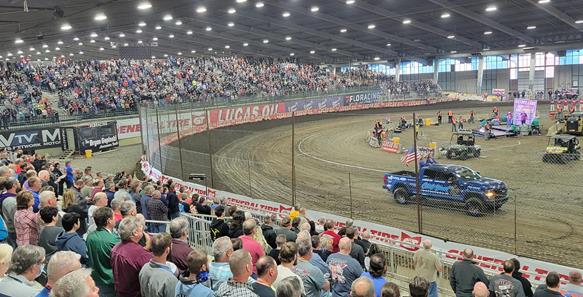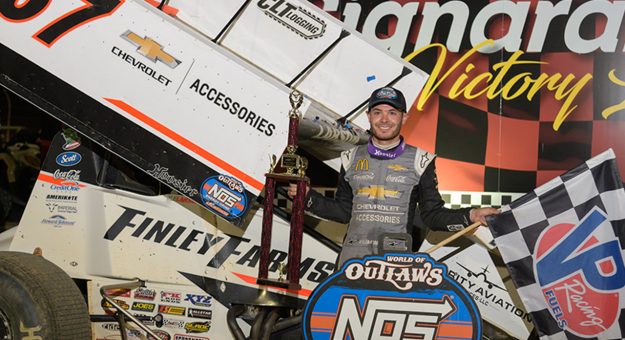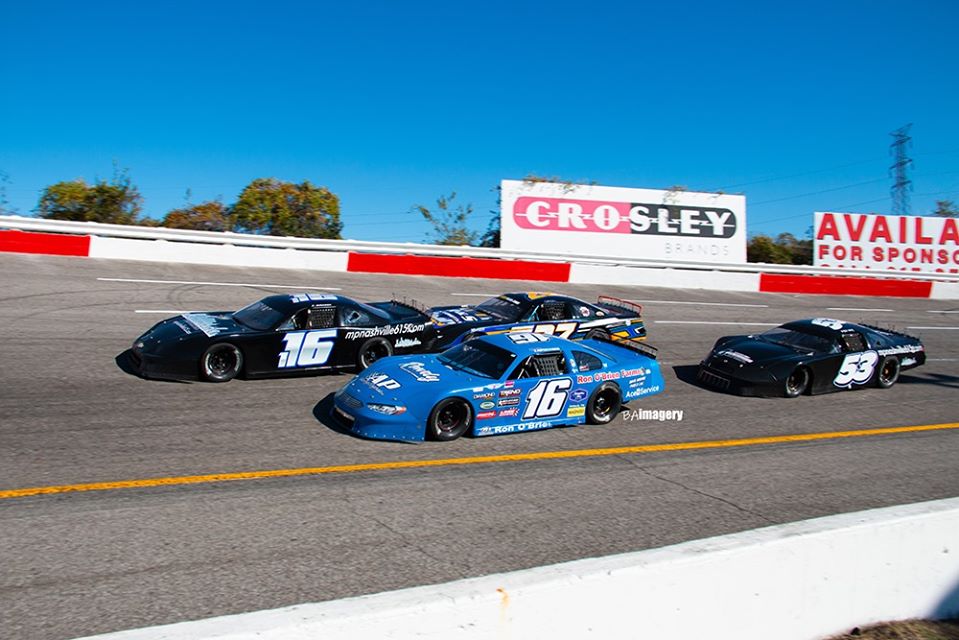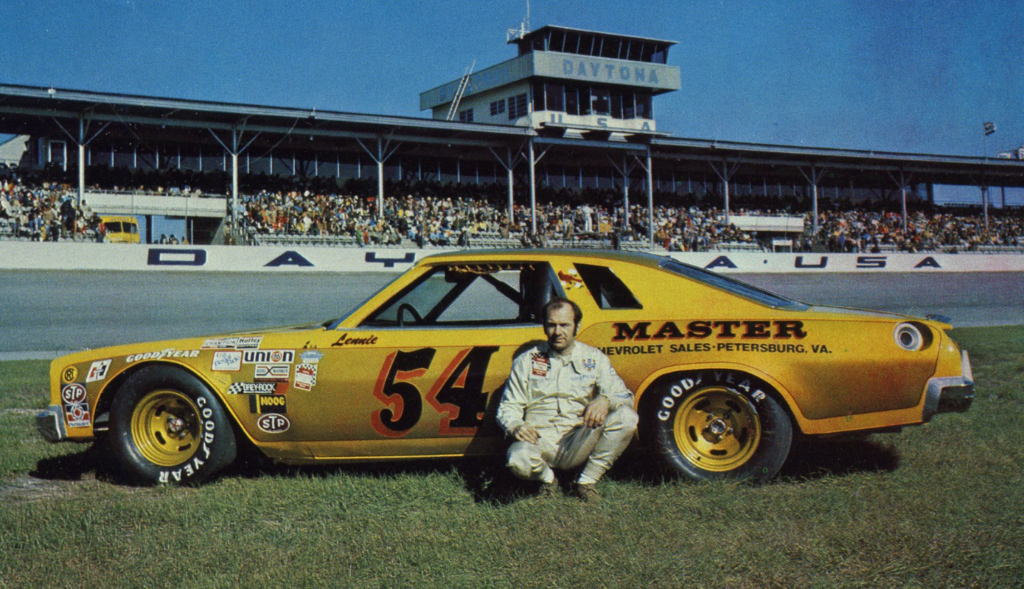WARNING! For inexplicable reasons, this is a largely positive piece. Those expecting the author’s typical complaining may be disappointed.
Seems we had another good weekend in NASCAR. Atlanta was just what the doctor ordered after there COULD have been some flagging of attention and enthusiasm in the core fan area (the Southeast) because the circus had been on the other side of the country for three weeks.

Attendance looked good, and TV ratings were up (over Phoenix, which ran the same weekend a year ago).
The racing itself has gotten high marks. Some skeptics are begrudgingly entertaining the possibility that the NextGen car is living up to its hype.
Not surprisingly, my attention also wandered elsewhere, to the world of racing beyond the NASCAR traveling series. The nice thing is, a lot is going well there, too.
The winter season brought two events that nearly rival NASCAR for attention: the Snowball Derby in Pensacola, Fla., and the Chili Bowl in Tulsa, Okla. Now weekly and special-event racing seems to be heating up and looking largely positive.

In my neighborhood, weekly sprint car racing has begun, and despite some weather challenges, Lincoln Speedway, Port Royal Speedway, and Williams Grove Speedway have gotten in races, drawing good crowds and good fields of cars.
Some of this good stuff may just be the psychological lift from less focus on the COVID-19 pandemic (no political points of view needed here), but regardless of the underlying situation, it’s hard to argue against things being headed up so far in 2022.
There are negatives out there, to be sure. In my area, the disappearance of Trail-Way Speedway – sold for purposes other than racing – is a downer, and I’m seeing/hearing similar situations elsewhere, but some old tracks are reopening, and an occasional new track is being built
Racing’s long-range future may still be a subject for discussion, but the short-term looks OK.
My point with this article is that good news for NASCAR and good news for local racing are complementary, and we should be trying to keep BOTH pointed in the right direction.
If you look at the period from NASCAR’s climb to the mountaintop (mid-2000s) to its fall ino (or at least near) the gutter (10-15 years later), you’ll see that all that came after NASCAR seemingly tried to hog ALL the motorsports attention for itself, pushing weekly racing off the sports page and TV screen. Weekly racing also suffered a significant decline.

I believe there’s more of a realization today that, when one segment of racing goes up, all segments benefit, and the same holds for declines. NASCAR seems to celebrate its drivers running in short-track events (God bless Kyle Larson).


Now, if only we could re-establish the link between weekly racing and drivers moving up to NASCAR’s major touring series. Sadly, that’s still not happening. If a young driver starts looking good, the current trend remains to put her/him in an ARCA-Menards East/West car (the ultimate pay-to-play series, with total lack of popularity as a result). A few drivers get to run a year at Hickory Speedway, but hey, let’s spread the wealth a little, so we’re not limited to families that can afford to move to Charlotte so the kid can get started in Legends and then drive a year at Hickory before moving into the dreaded driver development pipeline.
When I was growing up and watching great races on Friday nights at Southside Speedway in Virginia, I saw drivers like Lennie Pond and Bill Dennis, both of whom had substantial shots at GN/Cup racing; Tommy Ellis, who won the Busch/Xfinity Series championship, and Sonny Hutchings, who had some great runs in GN/Cup with Junie Donlavey and Emmanuel Zervakis. (I moved away before Denny Hamlin hit town). Their success solidified my status as a big fan. Today, it’s hard to see that. The new NASCAR “stars” have had a cup of coffee here and a biscuit there, but had no time to build a fan base.

That’s a mistake.
I want NASCAR to continue its phoenix-like rise from the ashes, and I want short track racing to thrive even more. That’s all the more likely to happen if they work together, but both sides have to be committed for that to happen, and at least so far, NASCAR’s still not doing its part.
(PHOTO CREDITS – The Atlanta photos is by Mike Mulholland for Getty Images. The Chili Bowl photo is from the Chili Bowl website. The Kyle Larson photo is by Tim Alywin and appeared on MRN.com.The Cup photo is from Atlanta and is a Getty Image used in Speedway Media. The late model photo is by BAImagery and was used on the Nashville Speedway website, The Lennie Pond photo came from TMC Chase’s “Bench Racing from the Volunteer State” blog.
Frank Buhrman



Frank, everything you wrote is right on and makes a lot of sense. You hit the nail on the head about short track racing (sure hope no one starts calling it str) as we need to keep names and descriptions – jmo…
The closest track to me these days is 105 miles away and we do hope to get to one of their races after they start the season.
Thank you for keeping things interesting and keeping our focus (which strays at times) on track.
I have to say, Vivian, that I don’t know what I’d do in your location. Even with Trail-Way closing, I have four tracks (not counting the kart track, which I should) within about an hour of the house, and at least three more within two hours (plus another kart track or three). I know I’m spoiled. It really amazes me how much money is spent in this area on race cars (oh, yeah, I left out the drag strips, too, not to mention motocross tracks). Gotta hope it never goes away. Supposed to go to Lincoln Saturday for the first PA Sprint Series race of the year, but as of now, the weather forecasts really sucks, so I don’t know if my season’s getting underway or not. Still, there’s more the next weekend.
Yessir. Would definitely like to see a NASCAR reconnect with weekly tracks.
Frank. Great insight as always. It’s good to see some positives in the racing world. Don’t know if we’ve just been locked down for so long that any glimmer is great or things are in fact moving in a positive direction. Only time will tell.
The connection to the local tracks played a big part in the growth of NASCAR. I think The early leaders understood that as did Winston. When they left it seemed like subsequent sponsors felt the sport had arrived and saw no need to maintain those connections. That started the spiral IMO.
Add to it raising the bar on entry and the path from local short tracks all but dried up and it showed as you’ve described.
One of my concerns with the NEXT GEN is where is the path going to be into it-both for drivers and mechanics? Is the feeder system going to be out of the IMSA, TA, ASC ranks? You go to how many races a year and how many different tracks and how many run independent rear suspensions and such?
This shift reminds me when USAC left dirt and the European influx began. It was like the Top cut off its feeder system for drivers, crews and fans alike. I hope this is not a repeat.
Drivers like Sam Mayer and Natalie Decker among others can be found running TA. Will this be the new feeder system?
I hope this is the turn. Going to keep watching to see.
Thanks again.
That’s an excellent point about the cars resembling road racers more than grassroots stocks – maybe that’s part of the story of NASCAR returning to LeMans and looking at street races. Whether it makes for good racing or not, I don’t like the NextGen car because it’s a NASCAR, not a Chevy, Ford, Toyota, or whatever. Unfortunately, that seems to be a battle long lost.
Speaking of local racers, I hear that Ray Hendrick of Richmond, Va., is being considered by the “pioneer” category for inclusion in the NASCAR Hall of Fame. Well deserved and overdue! Ray is commonly credited with “more than 700 wins,” but the number of obscure tracks he ran and his active racing period make that difficult to confirm. Historian Larry Jendras has documented nearly 400 victories, though, including many of the biggest modified and late model events run during his era. Hendrick drove only 17 Grand National/Cup events during his career, but I’ll bet fans showed up to support him for every one of those starts. I first saw him in 1963, when he drove a two-year-old Pontiac to a top ten finish, running the last couple of laps on three wheels. I saw him take cars that didn’t run up front for anybody else and put them in the lead. No one who saw him race will tell you they’ve seen better. Ray did all this as a blue-collar guy racing for the love of it. No driver-development program; he was in his 40s by the team he really reached his peak. I don’t think anybody will be taking about the current crop of driver-development-program “stars” in 50 years they way they still talk about Ray. He is why it used to be better.